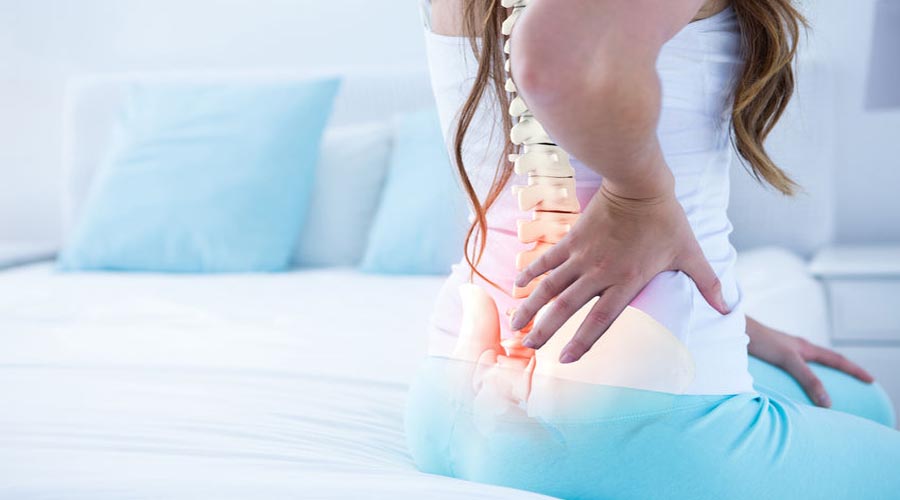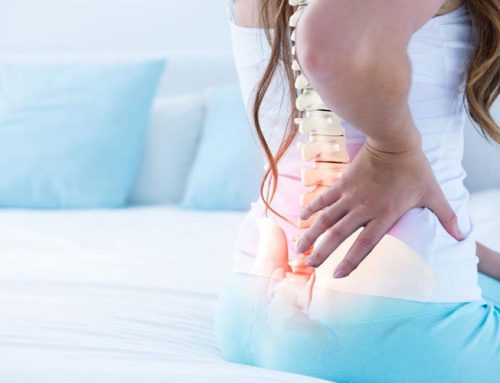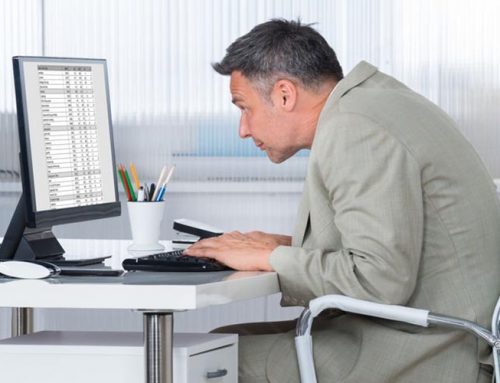Experiencing Low Back Pain? The lumbar spine, or low back, is a remarkably well-engineered structure of interconnecting bones, joints, nerves, ligaments, and muscles all working together to provide support, strength, and flexibility. However, this complex structure also leaves the low back susceptible to injury and pain.
Nearly 80 percent of adults are affected by low back pain at some point in their lives; it can be either acute or chronic. Acute pain starts suddenly and is usually the result of mis-using the body in some way. Most acute low back pain is caused by an injury to the muscles, ligaments, joints, or discs; the single most common cause of an acute lower back pain is a torn or pulled muscle and/or ligament, and is a result of an accident, muscle strains, and sports injuries. When injured, the body reacts by mobilizing an inflammatory healing response. While inflammation sounds minor, it can cause severe pain. This type of pain typically comes on suddenly and lasts for a few days or weeks, and is considered a normal response of the body to injury or tissue damage. The pain gradually subsides as the body heals.
Acute low back pain may become chronic if left untreated. Chronic low back pain keeps recurring and usually lasts over 3 months; it often involves a disc problem, a joint problem, and/or an irritated nerve root.
Common Causes of Low Back Pain Include:
- Lumbar herniated disc
- Degenerative disc disease
- Spinal Stenosis
- Sacroiliac Joint Dysfunction
- Facet Joint Dysfunction
- Arthritis
- Poor Posture
- One Leg Shortness
Additionally, pain from internal organs may radiate or be referred to low back, for example, due to constipation, kidney stones or ovarian problems.
What to do when you have a Low Back Injury.
If you’ve recently injured your low back, there are a few things you can do.
Ice then heat
During the first 24 to 48 hours, use ice wrapped in a towel or cloth. Ice helps to reduce swelling, muscle spasms, and pain. Thereafter, switch to heat. Heat helps warm and relaxes sore tissues.
Warning: Never apply a cold or heat source directly onto skin, always wrap it in something.
Over-the-counter medications
Tylenol or Advil, taken according to package directions, may help reduce inflammation and pain.
Take it easy
While days of bed rest is not recommended, you may need to modify your daily routine to give your lower back the opportunity to recover.
When to Seek Medical Attention
- Low back pain is, or becomes severe and persistent
- Does not subside after a few days
- Interferes with sleep and daily activities
The symptoms listed below always require immediate medical attention:
- Bowel or bladder dysfunction
- Groin or leg weakness or numbness
Successful treatment of Low Back Pain, weather acute or chronic, involves correct diagnosis of the underlying problem, and may consist of the following:
- chiropractic adjustments to improve alignment of the spine and reduce muscle imbalances
- deep tissue massage
- acupuncture
- physiotherapy





